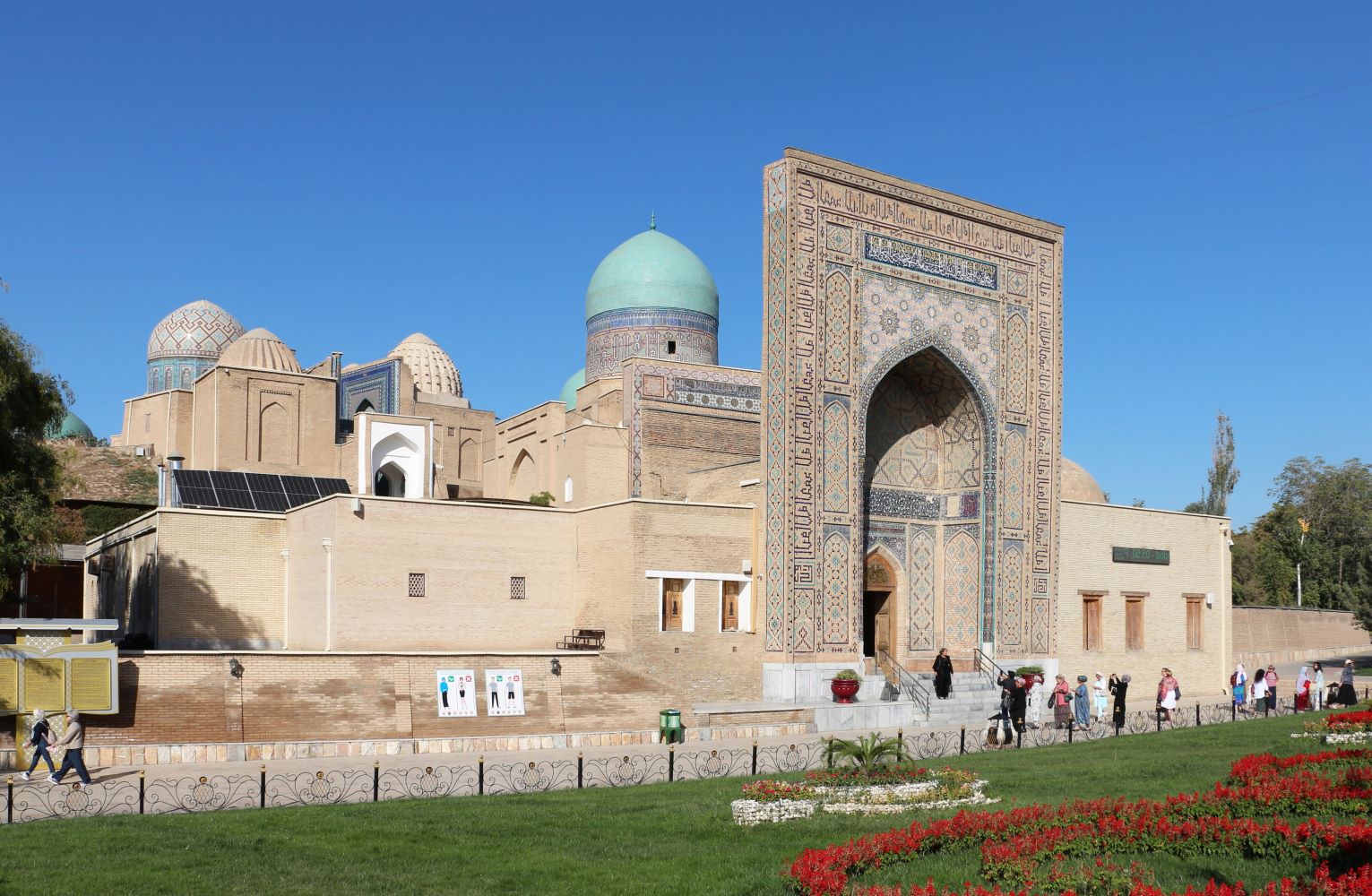
Shah-i-Zinda, a stunning necropolis in Samarkand, Uzbekistan, holds centuries of history and architectural beauty. This ancient site, whose name means "The Living King," is a collection of mausoleums and other religious buildings dating back to the 9th century. Why is Shah-i-Zinda so significant? It's a place where art, culture, and history converge, showcasing intricate tile work, vibrant colors, and unique designs. Visitors can explore the resting places of royals, scholars, and saints, each with its own story. Whether you're a history buff, an architecture enthusiast, or just curious, Shah-i-Zinda offers a glimpse into the past that is both educational and awe-inspiring.
Shah-i-Zinda: A Glimpse into History
Shah-i-Zinda, located in Samarkand, Uzbekistan, is a stunning necropolis that dates back to ancient times. This architectural marvel is a testament to the rich history and culture of the region. Let's dive into some fascinating facts about this historical site.
-
Shah-i-Zinda means "The Living King" in Persian, referring to the legend of Kusam ibn Abbas, a cousin of Prophet Muhammad, who is believed to be buried here.
-
The necropolis was established in the 11th century, making it over 1,000 years old.
-
The site consists of more than 20 mausoleums, each with unique architectural styles and intricate tilework.
-
Shah-i-Zinda is part of the UNESCO World Heritage Site of Samarkand, recognized for its cultural and historical significance.
Architectural Marvels of Shah-i-Zinda
The architecture of Shah-i-Zinda is a blend of different styles and periods, showcasing the evolution of Islamic art and architecture. Here are some key architectural facts.
-
The mausoleums are adorned with stunning blue tiles, a hallmark of Timurid architecture.
-
The complex features a unique combination of Persian, Turkic, and Mongol architectural elements.
-
The intricate tilework includes geometric patterns, floral motifs, and calligraphy, each telling a story of its own.
-
The use of glazed bricks and tiles in Shah-i-Zinda was revolutionary for its time, setting a precedent for future constructions in the region.
Legends and Myths Surrounding Shah-i-Zinda
Shah-i-Zinda is not just an architectural wonder; it is also steeped in legends and myths that add to its mystique. Here are some intriguing tales associated with the site.
-
According to legend, Kusam ibn Abbas was beheaded by pagans but miraculously picked up his head and walked into a deep well, where he still lives.
-
Pilgrims believe that visiting Shah-i-Zinda can bring blessings and fulfill wishes, making it a popular pilgrimage site.
-
Some legends suggest that the site has hidden treasures buried beneath its grounds, waiting to be discovered.
-
The necropolis is also believed to be a place where the earthly and spiritual worlds intersect, adding to its sacred aura.
Historical Significance of Shah-i-Zinda
Shah-i-Zinda has played a crucial role in the history of Samarkand and the broader region. Here are some historical facts that highlight its importance.
-
The site served as a royal burial ground for the Timurid dynasty, with many members of the royal family interred here.
-
Shah-i-Zinda was a center of religious and cultural activities during the Timurid era, attracting scholars, artists, and pilgrims.
-
The necropolis was extensively renovated in the 14th and 15th centuries under the patronage of Timur and his successors.
-
The site has survived numerous invasions and natural disasters, standing as a testament to the resilience of Samarkand's heritage.
Restoration and Preservation Efforts
Preserving Shah-i-Zinda's beauty and historical significance has been a priority for many. Here are some facts about the restoration and preservation efforts.
-
Extensive restoration work was carried out in the 20th century to repair damage caused by time and neglect.
-
Modern preservation techniques have been employed to maintain the structural integrity and aesthetic appeal of the mausoleums.
-
International organizations, including UNESCO, have supported efforts to preserve Shah-i-Zinda as a cultural heritage site.
-
Local artisans and craftsmen have played a vital role in the restoration process, using traditional techniques to ensure authenticity.
Cultural Impact of Shah-i-Zinda
Shah-i-Zinda's influence extends beyond its historical and architectural significance. It has left a lasting impact on the culture and identity of the region. Here are some cultural facts.
-
The site has inspired countless artists, poets, and writers, who have drawn inspiration from its beauty and history.
-
Shah-i-Zinda is a symbol of Samarkand's rich cultural heritage and is celebrated in local festivals and traditions.
-
The necropolis has been featured in numerous films, documentaries, and books, bringing its story to a global audience.
-
The site continues to attract tourists from around the world, contributing to the local economy and promoting cultural exchange.
Unique Features of Shah-i-Zinda
Shah-i-Zinda is home to several unique features that set it apart from other historical sites. Here are some distinctive aspects of the necropolis.
-
The complex is built on a hillside, with the mausoleums arranged in a linear fashion along a narrow, winding path.
-
The "Chartak" or four-arched domed structures are a distinctive feature of Shah-i-Zinda's architecture.
-
The site includes a mosque and a madrasa, highlighting its role as a center of religious and educational activities.
-
The mausoleums are adorned with inscriptions in Arabic and Persian, providing valuable insights into the history and culture of the time.
Shah-i-Zinda in Modern Times
Shah-i-Zinda continues to be a site of great importance in modern times. Here are some facts about its contemporary relevance.
-
The necropolis is a popular tourist destination, attracting thousands of visitors each year.
-
Shah-i-Zinda is a source of pride for the people of Samarkand, symbolizing their rich cultural heritage.
-
The site is used for various cultural and religious events, keeping its traditions alive.
-
Shah-i-Zinda has been the subject of numerous academic studies, contributing to our understanding of Islamic art and architecture.
Fun Facts about Shah-i-Zinda
Let's end with some fun and lesser-known facts about Shah-i-Zinda that you might find interesting.
-
The name "Shah-i-Zinda" has been used in various works of literature and art, symbolizing eternal life and spiritual awakening.
-
The site is said to have a unique microclimate, with cooler temperatures compared to the surrounding area.
-
Shah-i-Zinda has been featured on postage stamps and currency, highlighting its national importance.
-
The necropolis is a popular spot for photography, with its stunning architecture providing a perfect backdrop.
-
Local legends suggest that the site is haunted by the spirits of those buried there, adding an element of mystery.
-
Shah-i-Zinda is considered one of the most beautiful and well-preserved necropolises in the world, attracting admiration from historians and tourists alike.
The Timeless Beauty of Shah-i-Zinda
Shah-i-Zinda stands as a testament to the rich history and architectural brilliance of Samarkand. This necropolis, with its stunning mausoleums and intricate tile work, offers a glimpse into the past, showcasing the craftsmanship of ancient artisans. Each structure tells a story, reflecting the cultural and religious significance of the site.
Visitors are often left in awe by the vibrant colors and detailed patterns that adorn the tombs. The blend of Persian, Islamic, and Central Asian influences creates a unique visual experience. Whether you're a history buff, an architecture enthusiast, or simply someone who appreciates beauty, Shah-i-Zinda has something to offer.
Its enduring charm continues to attract tourists from around the world, making it a must-visit destination. So, next time you find yourself in Samarkand, don't miss the chance to explore this historical gem.
Was this page helpful?
Our commitment to delivering trustworthy and engaging content is at the heart of what we do. Each fact on our site is contributed by real users like you, bringing a wealth of diverse insights and information. To ensure the highest standards of accuracy and reliability, our dedicated editors meticulously review each submission. This process guarantees that the facts we share are not only fascinating but also credible. Trust in our commitment to quality and authenticity as you explore and learn with us.


